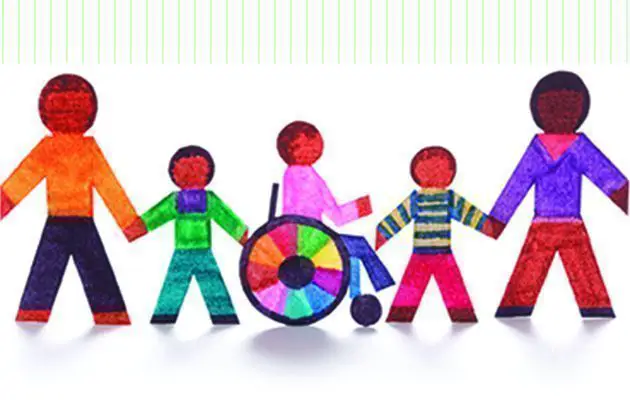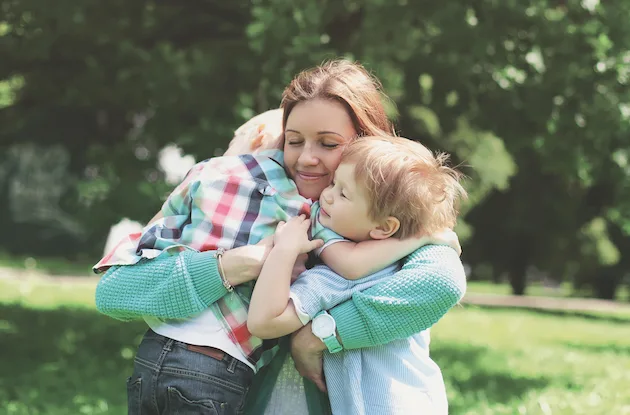Your child with autism wants to form a secure bond with you, even if it doesn’t always seem that way. Part of the challenge is learning to understand signals: developing insight into how your child’s mind works, trying to see the world as he or she sees it, and not comparing your parenting skills with those of a parent of typical children.
The most fundamental bond between humans is the bond between child and parent. Psychologists have a name for the process that occurs as a child develops a secure bond with his or her parent: attachment. Whether or not you are familiar with the term, you have been affected by it, and so has your child. It’s part of our culture. But how does the theory of attachment apply to your relationship with your child who is on the autism spectrum?
Attachment theory has been a bedrock concept of child development, and yet for children on the autism spectrum, the milestones of secure attachment may not look at all like what we expect. All atypical children need to feel safe and securely attached as much as typical children, yet they may behave differently or even seem to reject parents’ attempts to create a safe and secure relationship. It’s a fact that children on the autism spectrum are impaired in their ability to navigate social relationships, so of course they will react to their parents differently—not because parents are not sufficiently responsive or sensitive, but because of the way their brains are wired. In other words, parents: It’s not your fault!
And keep in mind that the quality of your bond with your child is certainly not the only factor that affects your child’s development. Genetics, natural temperament, and environment are a few of the other important influences. In children with autism, attachment theory as a predictor of future mental health is not such a great barometer; in fact, it can be downright discouraging.
Atypical Attachment
For children with autism, the signposts of secure attachment may not be obvious. Your child may anxiously expect you to be there for him or her, but may not be able to demonstrate reciprocity like a typical child, such as giving you a hug. Part of the challenge is learning to understand your child’s signals: developing insight into how your child’s mind works, trying to see the world as he or she sees it, and not comparing your parenting skills with those of a parent of typical children. Let’s face it: There is no real comparison. Atypical children need atypical parenting.
All children on the autism spectrum require much more supervision and assistance than typical kids. As the child matures but the daily demands on the parent do not diminish—and if the child does not respond to the parent’s love and care in gratifying ways—it’s only natural that the parent’s nerves begin to fray. Having to be available and supportive 24/7 can leave even the most devoted parent overwhelmed and depressed. Over time, a parent’s judgment about how much care to provide can become distorted by stress, doubt about the child’s ability to function on his or her own, setbacks, and conflicting input from spouse and family. Add exhaustion, and it is easy for a parent to lose perspective and become over-involved. Feeling guilty about not having created a securely attached child will often have parents going overboard into the ‘helicopter’ department. Caring for your child, loving your child, supporting your child—nothing is more important than that, right?
By being a consistent and responsive parent for your child with autism, you are creating the steady presence that your child needs, but your own emotional well-being is every bit as important. Reclaiming your own self is essential to nurturing your child. Here are a few options I suggest to parents:
1. Practice self-compassion.
Acknowledge the challenges in your life and stop criticizing yourself for not being a “good-enough” parent as evidenced by your child’s behaviors. As you mentally embrace yourself when you are feeling most challenged, you are modeling a compassionate way of being in the world that imprints on your child. Research has shown that self-compassion is strongly linked to mental well-being, happiness, life satisfaction, and better relationships. Can you imagine how increasing your self-compassion could help your relationship with your child?
2. Develop interests outside the home and your child.
Learning taikwondo, taking a pottery class, or joining the adult swim team are just a few examples of what you might do. It will infuse your family life with extra energy as you come home with a glow and show off your new moves. Helping to widen your child’s narrow window of interests is a healthy side effect of widening your own scope of activities.
3. Spend quality time with your child apart from chores and homework.
Sit down on the floor together and really join in your child’s activity. Learn to notice small signals, try to see the world from his or her perspective. Sideways activities are a great way for children on the spectrum to include their parents in their passions. So take the time to learn all about the hummingbird’s pollination behavior or whatever interests your child. It may seem like your child prefers to be alone, but the truth is that children with autism get lonely too. They need you to help them build that bridge to connecting with others.
4. Above all, don’t mistake your child’s lack of social responsiveness with a lack of connection to you.
Your child’s attachment needs are just as strong as typical kids. It is just harder for kids with autism to communicate their needs and emotional feelings. Have faith in your efforts as a parent, and try to treasure the small moments that make your family a place of safety and comfort not only for your child but for yourself as well.




















